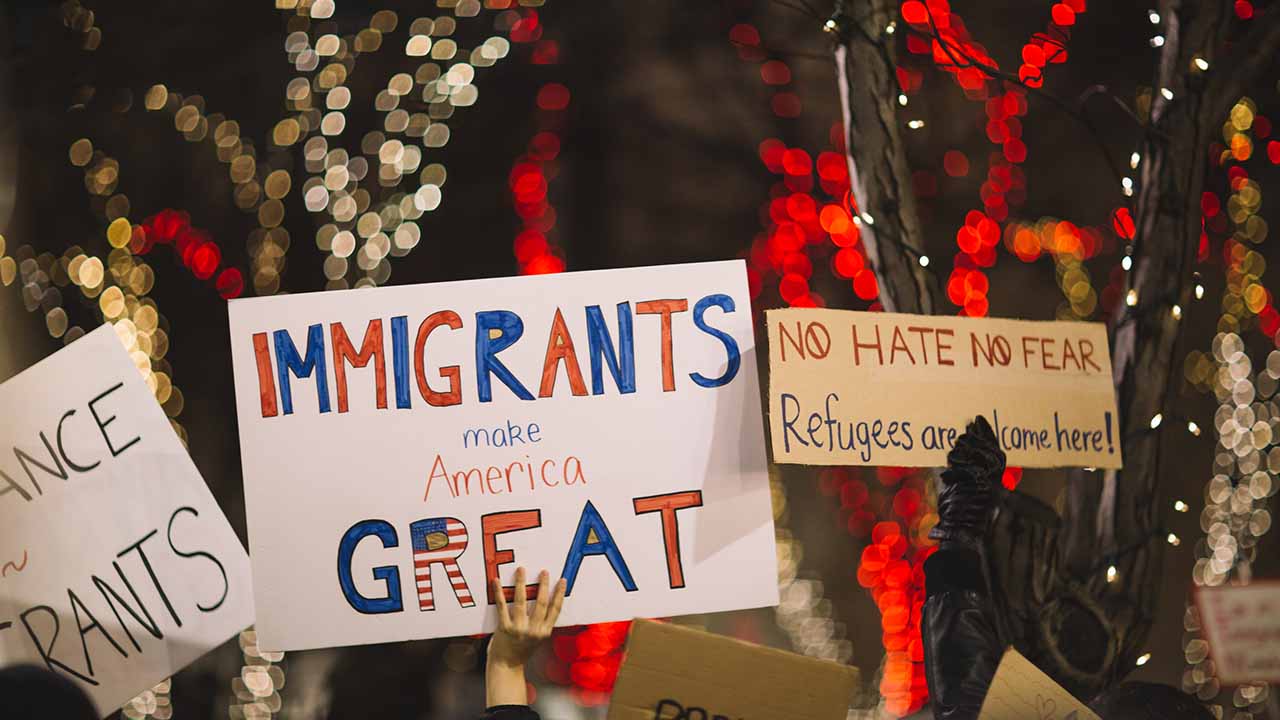On January 19, the Royal Canadian Mounted Police discovered four frozen bodies near Emerson in Canada’s Manitoba province. The dead, part of an 11-member group of Indians allegedly trying to cross over to the US from Canada illegally, included a three-year-old boy. The ill-fated illegal migrants were stranded in a blizzard, as the temperature plummeted to -35°C. It was suspected that the family had paid upwards of ₹1.5 crore to the trafficking agents for a safe passage to America.
The dead came from Gujarat, a Patel family of a schoolteacher from Dingucha village, located about 12 km from the state capital Gandhinagar. The tragic story of Patels was widely covered in newspapers in India, the US and Canada, and everywhere else. Jagdish Baldevbhai Patel, a son of a farmer, was educated and had worked at a Gandhinagar school before the pandemic. Over the last two years, after the school closed, he moved his family back into his parent’s home in Dingucha and helped in his brother’s garment factory and on his father’s farm, said a Guardian report.
The “mind-blowing tragedy,” as described by Canadian Prime Minister Justin Trudeau, put the spotlight on many Indians who embark upon often treacherous journeys to North America. The incident was rare though, as the US faces an enormous number of illegal immigrants on its border with Mexico, but rarely from the Canadian side.
In 2021, 2,600 Indian nationals were caught by the US authorities at the Mexico border. The number was large even before the pandemic. In 2007, the number of Indian detainees was 76; but in 2019, it rose to 7,600. The number of migrants trying to cross between ports of entry along the US-Canada border dropped from 6,806 in 2009 to 916 in 2021, says U.S. Customs and Border Patrol. In 2019, the border police apprehended 339 Indians trying to cross into the US at the northern border, 129 people were detained in 2020 and 41 last year, say a Reuters report. The directions change, but destination and drive do not. In 2019, a six-year-old Indian girl died of heatstroke in the Arizona desert while trying to cross the US border from Mexico. In August 2020, an Indian man, on being apprehended by US authorities, admitted walking on the foot for days to cross the US-Canada border.
In another category, nearly half of the estimated 11 million undocumented immigrants in the US did not take any of the difficult routes through the blizzard, desert or the Rio Grande to enter the country. They flew in with a visa, passed inspection at the airport, and overstayed.
Undocumented Immigration Is a Mixed Bag
Of roughly 10.3 million undocumented immigrants in the US, 5,87,000 are of Indian origin, who hold a collective spending power of $15.5 billion and contribute $2.8 billion to the federal, state and local tax revenue, said a report by think-tank New American Economy.
Interestingly, undocumented immigrants from India are not totally an unfair deal to countries like the US. Trafficking of Indians helps these markets in short and long runs. First, human trafficking to the US is a multi-million-dollar business and can cost anywhere between ₹20 to ₹50 lakh per person. Second, the hardworking Indian human resource adds value to the country.
The New American Economy report, which analysed the top five nations contributing to the number of undocumented immigrants’ number to the US, found Indian immigrants to be second highest in terms of household income at $18.3 billion, spending power at $15.5 billion and contribution to tax revenue (federal, state and local) at $2.8 billion in 2019.
However, the numbers don’t essentially help India. The country despite being counted among the fastest-growing economies loses being the first choice of its own people, with the reasons ranging from unemployment to lack of basic amenities, talent retention policies and merit recognition, among others. Good career potential, quality of food, life and education, better healthcare, visa-less access to other countries, extensive social security mechanisms, work-life balance, skill-based growth path, and no hierarchy and fewer politics and corruption of developed lands fuel brain drain from India consistently.
Another failure is the fact that, unlike migrants from war-torn nations in Africa or the Middle East, who are escaping violence, political oppression or economic hardships, most Indian immigrants are relatively well-heeled, have no threat to their lives or families or livelihoods, and come from better to do states like Punjab and Gujarat. The Patels came from Gandhinagar, the Lok Sabha constituency of union home minister Amit Shah and the state whose ‘Gujarat Model’ paved the way for Narendra Modi to become India’s Prime Minister.
The Dream of Every Indian
Despite the many figures and surveys, Indians make quite an impressive case of legal immigration to the West. In 2020, Indian immigrants accounted for about 6 percent of the U.S. foreign-born population, making them the second-largest immigrant group after Mexicans and ahead of Chinese and Filipinos. This section of immigrants is more likely to be highly educated (since 2001, half of the H1B visas have gone to Indians), to work in management positions, to have higher incomes, and to create peer pressure for others. Often, with no legal ways left, many Indians head to these greener pastures with urgency, making compromises of all kinds.
Sluggish economic growth, low wages and a lack of job opportunities go against India. Its ongoing jobs crisis in January 2022 led to riots in Gaya, Bihar when around 10 million people applied for 40,000 jobs in the railways. About 75% of India’s population is still employed in the informal sector, where people earn only a few hundred rupees a day and there is no job security or benefits. In the formal sector, the unemployment rate is 8 percent, as many people are going for higher education, but failing to find non-blue-collar jobs. Gujarat, the state where Patel lived, has the lowest unemployment rate in the country, but 95% of the jobless are educated.
A Matter of Right Moves
On February 13, a two-year-old girl, among 15 other people from Gujarat, was rescued from different areas of New Delhi and West Bengal. They have been allegedly kept in illegal confinement for two months by suspected human traffickers, who lured them with the prospects of moving to the US. The joint operation by police of various states was launched to reach trafficking agents in response to the deaths of the Patel family at Emerson. The Gujarat police also plan to probe ‘illegal’ immigration and sensitise people against it.
While it is good to see Indian states’ police acting strongly on human trafficking, the real changes lie on the other side. The US, under President Joe Biden, has been accommodating when it comes to undocumented citizens. Within three days of joining the office, Biden, on January 23, 2021, introduced an immigration bill to Congress, to give a path to citizenship to 11 million undocumented immigrants in the country.
In another equally interesting move, last year, India and the UK signed a pact to provide enhanced employment opportunities for 3,000 young Indian professionals annually, in return for India agreeing to take back any of its citizens who are living illegally in the UK. Britain’s interior ministry said in a statement that the deal aimed to attract “the best and brightest, and supporting people coming to the UK through legal routes while stopping the abuse of the system and speeding up the removal of those who have no right to be in the UK.”
And, the Indians are ready, so excited that they are giving up their citizenship to belong to the foreign, blessed lands. Since 2015, 8,81,254 Indians have given up their citizenship, said the Minister of Home Affairs in Lok Sabha in December 2021. Overseas and non-resident Indians also drive remittances, for which India received $87 billion in 2021, with the US as the biggest source.
Immigration observers and experts, in an article, credited a mix of reasons to be driving such numbers annually. The prime reason is foreign countries opening doors for Indians, like Singapore, where on payment of one million dollars, you can get residency, or Scandinavian countries, which have eased immigration rules due to Indian IT professionals’ heavy demand in the US.
The government also does not mind the outflux and has made the process simpler. Indians can even renounce their citizenship online and apply for an Overseas Citizen of India or OCA card, which gives them the benefit of living and running a business in India.
In the end, all these services are possible only when everyone and everything is documented properly in both nations.


























